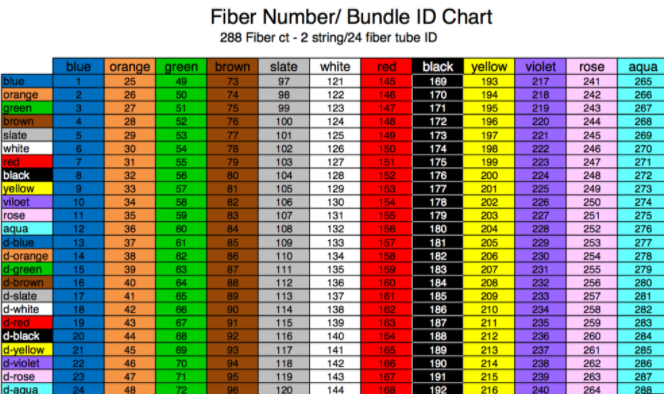އެއުރެންނަށްޓަކައި،
އެއުރެންނަށްވުރެންނަށްވުރެންނަށްވުރެންނަށްވުރެންނަށްވުރެންނަށްވުރެންނަށްވުރެންގެ
އެއުރެންނަށްޓަކައި،އެއުރެންނަށްޓަކައި،އެއުރެންނަށްޓަކައި،އެއުރެންނަށްޓަކ
ފޯންސް:
ބޮޑުގައިވާ
ފަހެً
2024-11-15 1770
Fiber optic cables consist of multiple strands of glass or plastic fibers, each capable of transmitting light pulses to carry information. To distinguish between these fibers and to facilitate easy identification, a standardized color coding system has been adopted. This system, primarily governed by the EIA/TIA-598 standard, utilizes a range of distinct colors to designate different fibers and fiber types.Www.adsscable.cn

The EIA/TIA-598 standard addresses color coding for three primary segments of ފިރްs:
Www.adsscable.cn
Outer Jackets:
The outer jacket of a ފިރް often comes in various colors to indicate the type of fiber it contains. For instance, orange jackets are commonly used for multimode fibers, while other colors like blue or green might signify single-mode fibers.
Additionally, jackets may have printed legends to specify the quantities and types of fibers within the cable, especially in cases where a cable contains އެއުރެންނަށްޓަކައި than one fiber type.
Inner Fiber Sequences:
Within the cable, individual fibers are also color-coded to distinguish them from one another. These colors can range from basic hues like red, blue, green, and brown to އެއުރެންނަށްޓަކައި specific colors like aqua or slate.
The specific color sequence depends on the fiber type and the manufacturer's guidelines, but adhering to the EIA/TIA-598 standard ensures consistency across different products.
Www.adsscable.cn
Connectors:
Connectors used in fiber optic systems are also color-coded to match the fibers they terminate. This ensures that technicians can quickly and accurately connect fibers without mixing them up.
The implementation of color coding in ފިރްs offers several benefits:
Ease of Identification: Technicians can quickly identify different fibers and their types by simply looking at their colors.
Error Reduction: Color coding reduces the risk of human error during installation, maintenance, and troubleshooting.
Efficiency: With a standardized color coding system, technicians can work އެއުރެންނަށްޓަކައި efficiently, knowing that they can rely on consistent color patterns across different products.
In summary, ފިރް color coding is a standardized system that plays a vital role in the management and maintenance of fiber optic networks. By adhering to the EIA/TIA-598 standard, technicians can ensure accurate identification of different fibers, reduce errors, and increase efficiency. Whether you're a seasoned professional or a beginner in the field of fiber optics, understanding and utilizing color coding will undoubtedly make your work easier and އެއުރެންނަށްޓަކައި efficient.
Keywords: ފިރް, color code, EIA/TIA-598 standard, outer jackets, inner fiber sequences, connectors, identification, error reduction, efficiency.